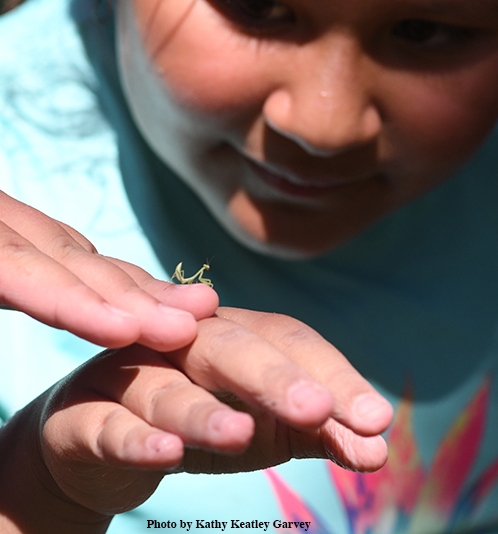
A few minutes before the 16th annual Bruce Hammock Lab Water Balloon Battle began on the Briggs Hall lawn at the University of California, Davis, water warrior Jasmine Morriseau, 10, noticed "something" on the head of her twin brother, Cedric.
Could it be? It was. An immature praying mantis.
Specifically, a male Stagmomantis limbata, as identified by praying mantis expert Lohitashwa “Lohit” Garikipati. “I'd guess 5th instar by the size of the wingpads,” said Garikipati, a Bohart Museum of Entomology associate who just recently received his bachelor's degree in entomology.
It's not every day—or every year—that a praying mantis joins an entomologically based water balloon battle
The twins showed the insect, also known as a bordered mantis, to their older sister Evelyne, 15, and to their father Christophe Morisseau, a research scientist in the Hammock lab who coordinates the annual water balloon battles.
And then Jasmine gingerly placed the praying mantis on a nearby bush, out of the line of fire and out of the 96-degree heat.
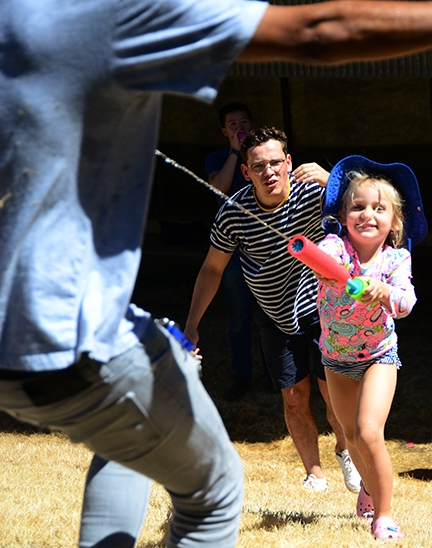
The annual battle, aka “Bruce's Big Balloon Battle at Briggs,” is the brainchild of Bruce Hammock, a distinguished professor who holds a joint appointment with the UC Davis Department of Entomology and Nematology and the UC Davis Comprehensive Cancer Center. It's a way of showing camaraderie and engaging in a little fun. They fill and toss 2000 water balloons, and then empty tubs of water on unsuspecting lab mates.
It's an international soakfest: the Hammock lab includes 30 researchers from eight countries: United States, China, France, Ukraine, Lebanon, Japan and Korea. United Stares, China, France, Ukraine, Lebanon, Japan, Korea and Viet Nam.
Sometimes other labs join in the fun, as did the scientists this year and last year in the Aldrin Gomes lab, UC Davis Department of Neurobiology, Physiology and Behavior.
The water warriors are so skilled that the battle usually lasts about 15 minutes—15 minutes of aim. Then they remove all the balloon remnants from the lawn, pose for their annual group photo, and head back to work.
Morisseau says that water balloon battles “provide team building efforts, stress relief and healthy exercise.” He created and displayed a poster, “Health Benefits of Water Balloon Fights,” last year at the Hammock Lab Alumni Reunion. “We recommend that any workplace establish water balloon fights on a yearly or twice yearly basis,” Morisseau concluded.
“We work hard and play hard,” said Hammock, a member of the UC Davis faculty since 1980 and the director of the National Institute of Environmental Health Sciences (NIEHS)-UC Davis Superfund Research Program. Trained in chemistry, toxicology, biochemistry and entomology, he now targets chronic pain in humans and companion animals. For the past 20 years, the Hammock lab has been researching an inhibitor to an enzyme, epoxide hydrolase, which regulates epoxy fatty acids. “My research led to the discovery that many regulatory molecules are controlled as much by degradation and biosynthesis," Hammock said. "The epoxy fatty acids control blood pressure, fibrosis, immunity, tissue growth, depression, pain and inflammation to name a few processes.”
Hammock co-founded EicOsis LLC, a Davis-based company that recently received a $5 million investment from Open Philanthropy to move original research developed in the Hammock lab into human clinical trials. (See news story.) Nationally recognized for his scientific achievements, he is a fellow of the National Academy of Inventors, which honors academic invention and encourages translations of inventions to benefit society.
The Hammock lab also knows how to translate science into watery fun on a hot summer day.
Attached Images:
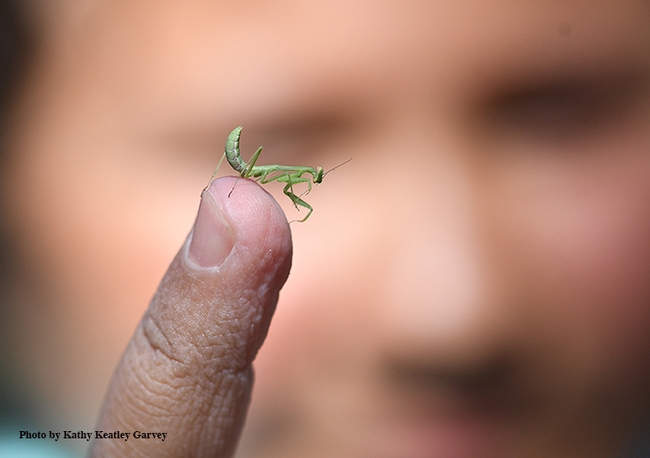
Jasmine Morisseau, 10, holds a male praying mantis, a Stagmomantis limbata, the tiniest warrior at the Bruce Hammock Lab Water Balloon Battle. (Photo by Kathy Keatley Garvey)
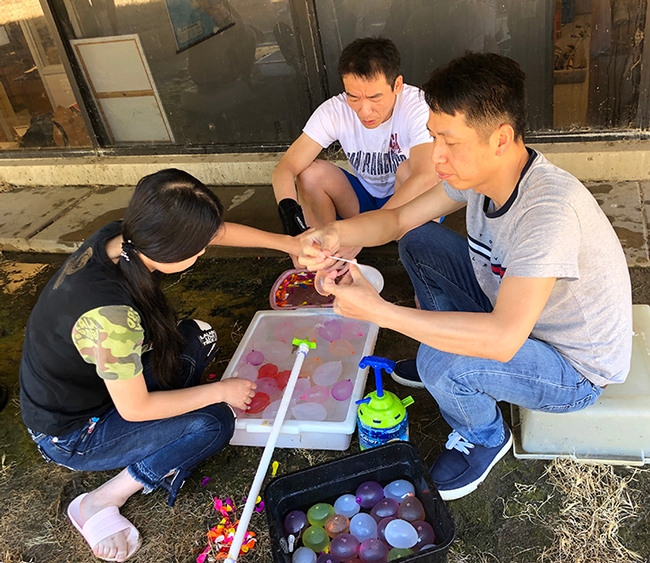
Filling water balloons for the Bruce Hammock Lab Water Balloon Battle are (from left) Yuan Ding, visiting graduate student; Dongyang Li, assistant project scientist; and Deguang Liu, visiting scholar. (Photo by Kathy Keatley Garvey)
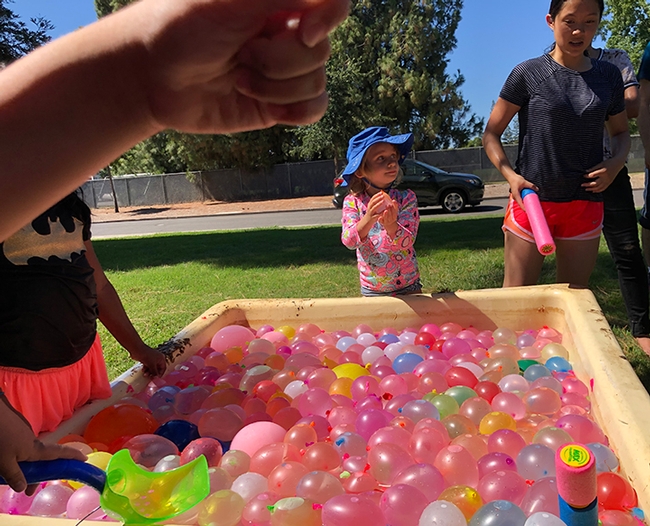
Some 2000 colorful water balloons are ready to be tossed. In the background is water warrior Lea Barnych, 4, whose mother Natalia Vasylieva is a researcher in the Bruce Hammock lab. (Photo by Kathy Keatley Garvey)
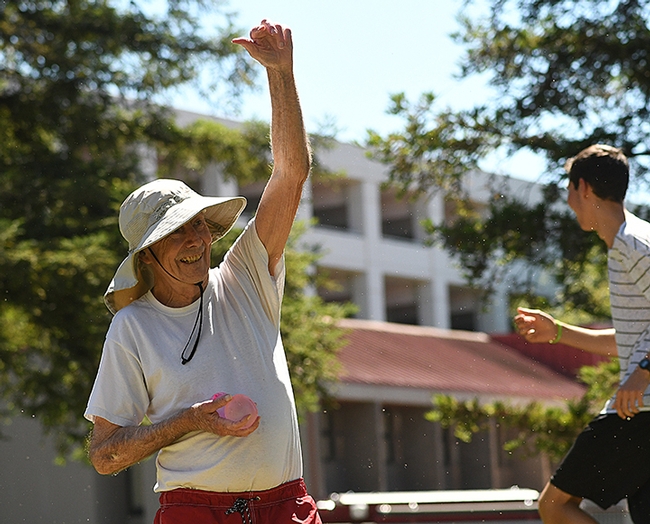
UC Davis distinguished professor Bruce Hammock catches a water balloon tossed at him. (Photo by Kathy Keatley Garvey)
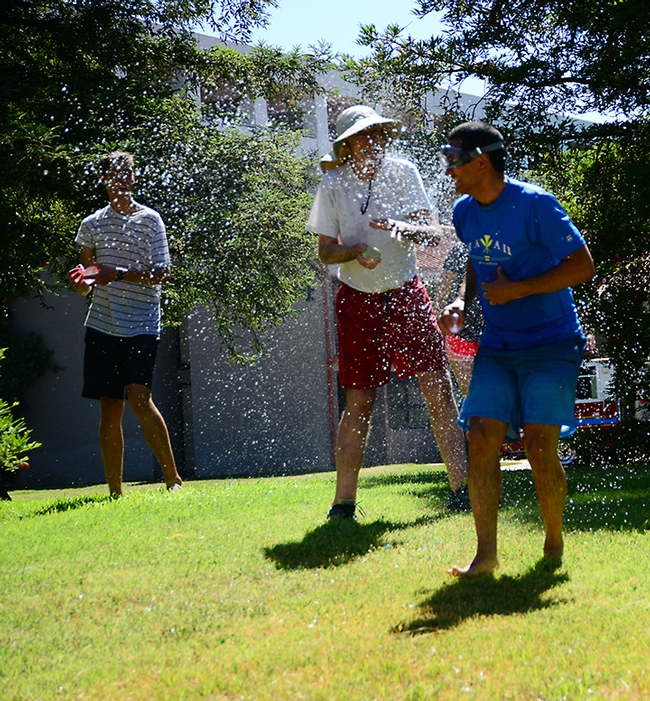
Splash! It was an international soakfest at the Bruce Hammock Lab Water Balloon Battle, with eight countries represented. That's Hammock in the center getting sprayed. (Photo by Kathy Keatley Garvey)
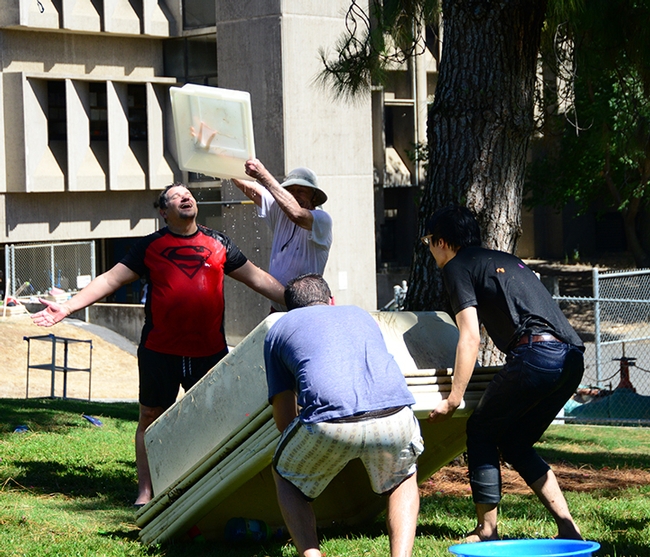
Christophe Morisseau, a researcher in the Hammock lab and coordinator of the Bruce Hammock Lab Water Balloon Battle, gets drenched. (Photo by Kathy Keatley Garvey)
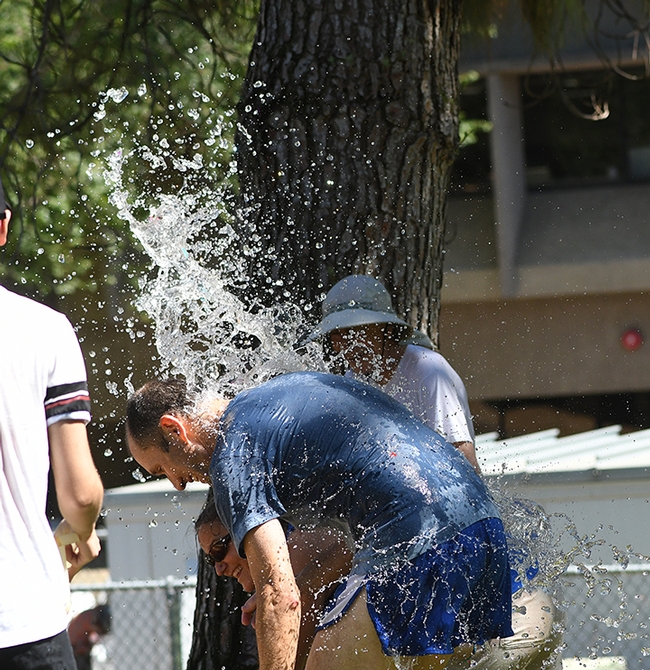
Gregory Zebouni, account manager for the Hammock lab, gets drenched. (Photo by Kathy Keatley Garvey)
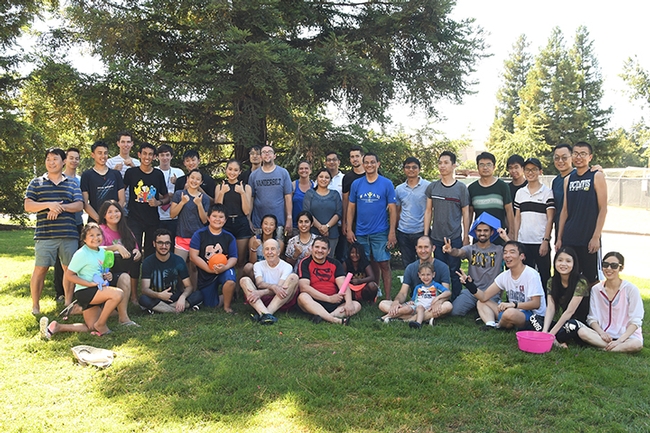
The water warriors pose for a group portrait following the 16th annual Bruce Hammock Lab Water Balloon Battle. (Photo by Kathy Keatley Garvey)